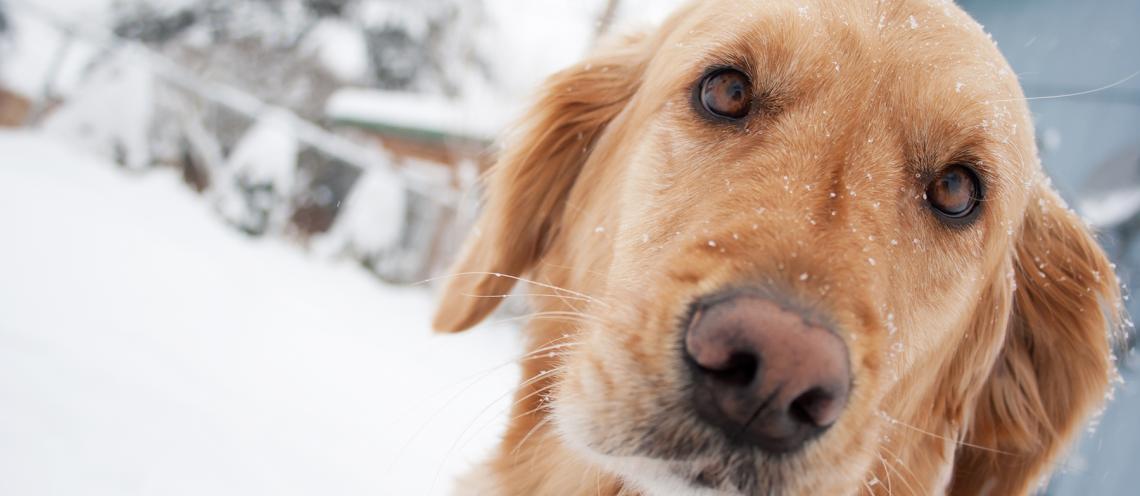
Pets need shelter from winter weather
Thursday, November 20, 2014
With the temperature now dipping below the freezing mark, Oklahoma residents are pulling out the flannel sheets, bumping up the thermostat or tossing a couple of extra logs in the fireplace in an effort to keep warm.
While making adjustments to keep yourself warm, it is vital to do the same for your pets, said Dr. Elisabeth Giedt, director of Continuing Education, Extension and Community Engagement at the Oklahoma State University Center for Veterinary Health Sciences.
“Your pets are 100% dependent on their owners for proper care. As you change your routine to meet the demands of cold weather, your pets must get the same from you,” Giedt said. “Whenever possible, it’s best for cats and dogs to be kept indoors during the winter months. If, for some reason, this isn’t an option, pet owners must make sure to take precautions to ensure a pet’s safety when outdoors.”
There is no question outdoor animals must have a place insulated and protected from the weather. It is imperative outdoor dogs have a doghouse that is insulated and protected. Be sure to face the entrance away from the wind and have a flap over the doorway to keep drafts to a minimum. Make sure the whole structure is waterproof and large enough for your dog to lie down. However, keep in mind the smaller the area, the easier it will be for the dog’s body to heat the house.
Clean hay, straw, cedar shavings or blankets should be placed in the house for added warmth and comfort. A pet’s fur also is a factor in keeping an animal warm in the cold weather. Matted fur will not keep your pet warm, so be sure to keep the dog’s coat well groomed.
“When the temperature is below 40 degrees Fahrenheit, shorthaired dogs, elderly dogs and puppies should be kept indoors for their safety,” Giedt said. “Paws, ears and tails are more susceptible to frostbite. The skin of an animal suffering with frostbite may initially appear bright red, and then turn a pale color. If you suspect frostbite, cover your pet with warm towels, gently pat the affected area dry (do not rub the area) and take the pet to your veterinarian.”
Cats and other wild animals that live outdoors during the winter months might seek warmth by crawling into car engines or wheel wells. Hit or bang on the car’s hood or sound the horn before starting the engine so the animal will have time to escape from what could be a traumatic situation.
Giedt said it is not just the cold weather that can be hazardous to your pets in the winter. People commonly change their car’s antifreeze in the winter months and some antifreeze contains ethylene glycol, which is toxic. Pets like the sweet taste of antifreeze and will readily consume it. Even a small amount is poisonous, so contact your veterinarian immediately if you suspect your pet has ingested antifreeze.
“The signs of antifreeze poisoning include staggering and appearing depressed or acting drunk,” she said. “These symptoms can last up to 12 hours, and it may even appear your pet is getting better. However, within 24 hours there will be prolonged vomiting, severe kidney pain, mouth and throat ulcers and ultimately the toxin will kill the pet. It’s imperative antifreeze spills get cleaned up right away. Be sure to store containers of antifreeze in sealed containers where children and pets can’t reach.”
Another tip for winter care of pets kept outdoors is pet owners may need to feed them extra food because staying warm typically requires extra calories. Always keep clean water available and check outdoor water bowls several times per day as water may freeze if the temperature is low enough.
“Just as you take extra precautions with your family during the winter months, do the same for your pet to ensure it stays safe and healthy during this cold season,” Giedt said.
